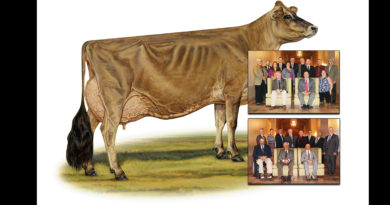NAJ Shares Milk Crisis Plan
The coronavirus pandemic has decimated the U.S. dairy industry during the past three weeks. The following article provides an excellent, comprehensive explanation about how the collapse of demand from the food service industry has led to the dire situation the industry finds itself in today.
https://thecounter.org/farmers-dumping-milk-dairy-shortages-covid-19-coronavirus/
In order to help the dairy industry to weather the current storm, two basic actions are needed quickly. First, producers need cash in the form of direct payments. Second, processors, particularly those servicing the food service industry, need to be able to convert inventory into cash. The CARES Act signed into law in late March provides USDA with three funding sources that can meet these needed action steps.
- $9.5 billion for specialty crop producers, livestock producers including dairy, and farmers supplying local food systems. One potential use of this money is for direct payments to producers in these three categories.
- $14 billion to CCC: Dairy Margin Coverage (DMC) comes out of CCC since it is open-ended on funding; “it costs what it costs” and dairy is already projected to get quite a bit of that increase. The CCC increase can also help with food purchase/donation which would really help both dairy and food banks if USDA would focus some of those funds on cheese.
- $15.8 billion for SNAP: SNAP doesn’t specify which foods to buy but there are restrictions. The dairy industry is asking for restrictions on dairy products to be lifted temporarily. For example, only families with a child under age 2 can buy whole milk with feeding programs. It would be helpful for that restriction to go away for a few months at least.
USDA could very well decide their actions this week. One week ago the National Milk Producers Federation (NMPF) and the International Dairy Foods Association (IDFA) released a joint proposal to USDA that utilizes money from all three CARES Act sources to address the two pressing issues facing the U.S. dairy industry; providing cash to producers and converting processor inventories into cash. Known as the Milk Crisis Plan (the full plan can be read here), the proposal includes actions to assist producers, processors and consumers. Producers need to contact their governors; state agriculture department directors; U.S. senators and congressional representatives supporting USDA actions that can quickly benefit producers, processors and consumers. A set of talking points can be found here (https://www.usjersey.com/Portals/0/NAJ/2_Docs/NAJ_Combined.pdf) followed by the IDFA and NMPF milk crisis plan.
The primary action steps in the Milk Crisis Plan are:
Providing Cash to Producers
- A voluntary program that will pay producers $3/cwt. provided they reduce their production by 10% from March 2020 base production. The program is proposed to run for six months, April through September. The obvious tradeoff is that producers give up 100% of the revenue from 10% of their milk in exchange for $3/cwt. for 90% of their milk. Many producers are already being required to reduce production because cooperatives and proprietary processors have already implemented production cuts of 10% or greater. The single most important step to price recovery is getting supply and demand back in balance, and this proposal will lead to faster reductions in milk production than a direct payment program not tied to production. However, previous direct payment programs from USDA have not required production cuts, and USDA could very well go that route again.
- Have USDA reimburse producers for milk that must be dumped. Last Friday USDA announced acceptance of this proposal.
Converting Processor Product Inventories into Cash
- USDA could expand the recourse loan program that is available for other commodities to include dairy products. Recourse loans would allow firms to carry heavier than normal inventories. The loans would cover FMMO component ingredient costs (not packaging, plant margins, warehouse costs, etc.).
- Make processors eligible for a program similar to the Small Business Association Paycheck Protection Program, provided the processors maintain staffing and continue to receive and process milk.
Assisting Consumers
- USDA needs to immediately begin to purchase substantial quantities of dairy products for feeding programs. This step would create demand for dairy products, helping processors convert inventory into cash, and address the growing food insecurity problem as more and more Americans find themselves out of work.
- USDA can modify, at least temporarily, all federal feeding programs to eliminate restrictions that limit consumer choice including WIC, School Lunch Program, and Supplemental Nutrition Assistance Program (SNAP). Current restrictions can include container sizes and fat levels.
The NMPF/IDFA plan represents a unified proposal from producers and processors, and it addresses the dairy industry’s most immediate needs of providing direct payments to producers and converting product inventory into cash for processors. Furthermore, it provides dairy nutrition to the ever-increasing number of people facing food insecurity. USDA needs to act as early as possible.
Producers need to contact their governors; state agriculture department directors; U.S. senators and congressional representatives soliciting their support for USDA actions that meet these objectives.
If you have questions, please do not hesitate to contact Erick Metzger or Drew Duncan at naj@usjersey.com or by phone.




